Name: Eva Solo
Date: 05/12/19
Professor: Marcela Godoy
As I mentioned before, I really enjoyed creating the potato starch plastic replacement and have been continuing exploring this recipe as my first attempt was somewhat burned. I identified the mistakes in the first trial due to the temperature being too high, the stirring tool was not effective (used the end side of a brush, so the scope was small in diameter), and the pan was too large for the amount I was working with.
To tackle these issues,
I replicated the steps using:
- 100mL of water
- 10mL of vinegar
- 10g of glycerol
- 14g potato starch
which is double the recipe, as I wanted to create more density. I only turned the pan on as I was ready to place the blend inside, and only turned it to low-height. I also attempted to heat the material in the beaker first to see if the consistency would begin changing, but after the first minute the colour stayed the same, and I poured the contents directly on the pan, followed by swift stirring with a proper wood stirring tool. This tool allowed me to push the mass with a large scope, thus preventing immediate burning.
Due to a larger mass, it took around 2 minutes to stir the blend into the consistency I wanted. I turned the pan off and began gathering my materials on the test plates. The reminding material in the pan pealed off seamlessly and perfectly resembled plastic. Its properties were: flexible, quite strong as I tried to tear it, and translucent to some extent.
I placed the main batch of materials on top of the oven to dry during the following week.
The results were great in comparison to the first attempt, as the material was consistent throughout and the same in pigment.
The reasoning why I was so drawn to this recipe was the aesthetic appeal, and my liking of this slime-like texture. I was thinking about creating some visual art with this batch and will continue to share my progression on a future journal entry.
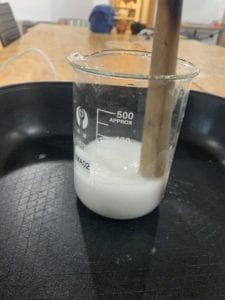
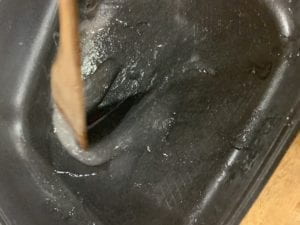
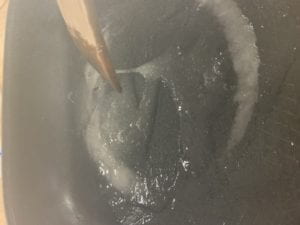
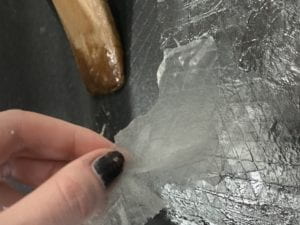

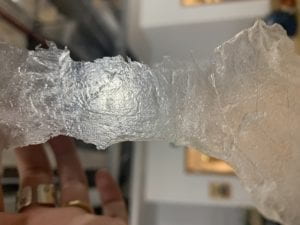
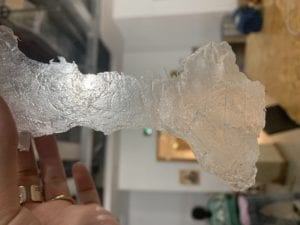
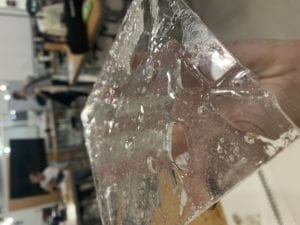
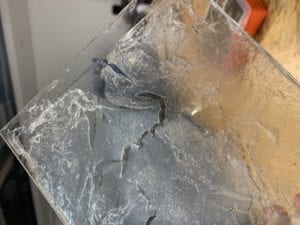
Leave a Reply